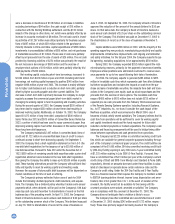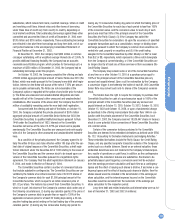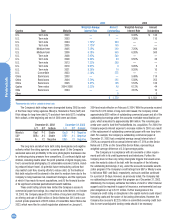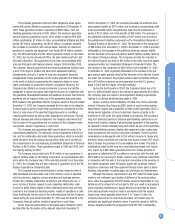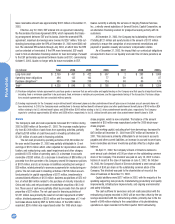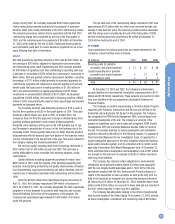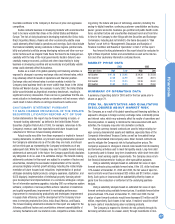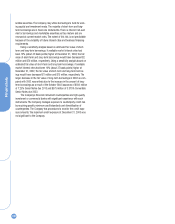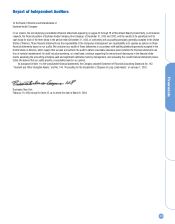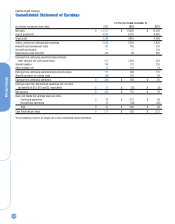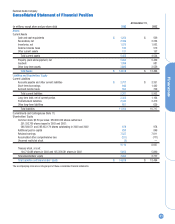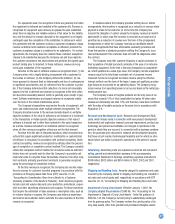Kodak 2003 Annual Report Download - page 38
Download and view the complete annual report
Please find page 38 of the 2003 Kodak annual report below. You can navigate through the pages in the report by either clicking on the pages listed below, or by using the keyword search tool below to find specific information within the annual report.
Financials
38
ketable securities. The Company may utilize borrowings to fund its work-
ing capital and investment needs. The majority of short-term and long-
term borrowings are in fixed-rate instruments. There is inherent roll-over
risk for borrowings and marketable securities as they mature and are
renewed at current market rates. The extent of this risk is not predictable
because of the variability of future interest rates and business financing
requirements.
Using a sensitivity analysis based on estimated fair value of short-
term and long-term borrowings, if available market interest rates had
been 10% (about 43 basis points) higher at December 31, 2003, the fair
value of short-term and long-term borrowings would have decreased $2
million and $70 million, respectively. Using a sensitivity analysis based on
estimated fair value of short-term and long-term borrowings, if available
market interest rates had been 10% (about 37 basis points) higher at
December 31, 2002, the fair value of short-term and long-term borrow-
ings would have decreased $1 million and $15 million, respectively. The
larger decrease in the fair value of long-term borrowings in 2003 as com-
pared with 2002 was entirely due to the increase in the amount of long-
term borrowings as a result of the October 2003 issuances of $500 million
of 7.25% Senior Notes due 2013 and $575 million of 3.375% Convertible
Senior Notes due 2033.
The Company’s financial instrument counterparties are high-quality
investment or commercial banks with significant experience with such
instruments. The Company manages exposure to counterparty credit risk
by requiring specific minimum credit standards and diversification of
counterparties. The Company has procedures to monitor the credit expo-
sure amounts. The maximum credit exposure at December 31, 2003 was
not significant to the Company.


